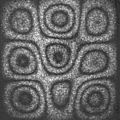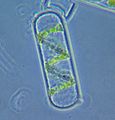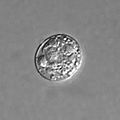Interferometer facts for kids
Interferometers are amazing tools that help scientists measure things with incredible accuracy, especially when it comes to light. They work by using the special way light waves interact with each other, a process called interference. Think of it like ripples in water: when two sets of ripples meet, they can either make bigger waves or cancel each other out. Light waves do something similar!
One of the most famous interferometers is the Michelson interferometer. It's used to measure tiny distances or changes very precisely, which is super helpful in many areas of science and technology.
Contents
How Interferometers Work
Interferometers use the idea of interference to make their measurements. Light travels in waves, just like sound or water. When two light waves meet, they can either add up to make a brighter light (this is called constructive interference) or cancel each other out to make a darker spot (this is called destructive interference).
An interferometer usually splits a beam of light into two paths. These two beams then travel different distances or through different materials before they are brought back together. When they recombine, the way they interfere with each other tells us about the differences in their paths. By looking at the patterns of bright and dark lines (called fringes), scientists can figure out very small details about what they are measuring.
What Interferometers Are Used For
Interferometers are used in many different fields because of their ability to measure things with extreme precision.
Astronomy
In astronomy, huge interferometers are built using multiple radio telescopes spread out over large areas. These telescopes work together like one giant telescope to get very detailed images of distant stars and galaxies.
- The Atacama Large Millimeter Array (ALMA) in Chile is a great example. It's a collection of many antennas that work together to study light from space.
- The Very Large Array (VLA) in New Mexico, USA, is another famous radio interferometer used to explore the universe.
Engineering and Manufacturing
Engineers use interferometers to check if surfaces are perfectly flat or if parts are made with the correct dimensions. Even tiny bumps or dips can be detected. This is really important for making high-quality lenses, mirrors, and other precision equipment. They can also measure tiny vibrations in objects.
Biology and Medicine
Interferometers are also used in microscopy to see very small things, like cells, in great detail. They can help scientists study how light passes through different parts of a cell, giving them more information than a regular microscope. For example, they can be used to look at plant cells or even tiny parasites.
Earth Science
Scientists use interferometers on satellites to measure changes in the Earth's surface. This can help them track things like earthquakes, volcano activity, or even the slow movement of glaciers.
Images for kids
See also
 In Spanish: Interferometría para niños
In Spanish: Interferometría para niños














